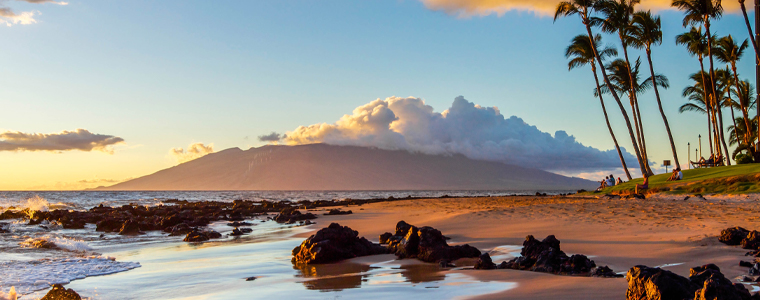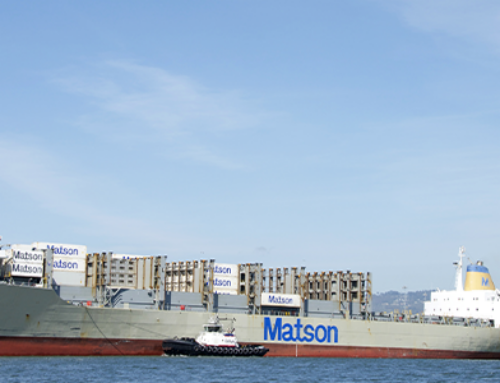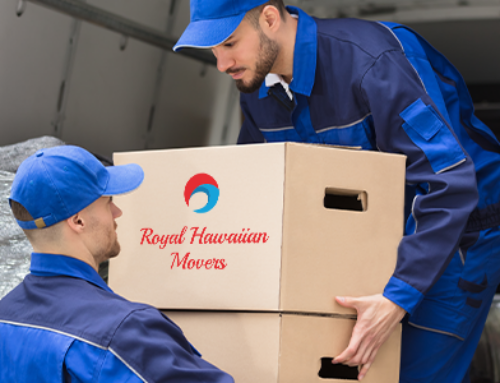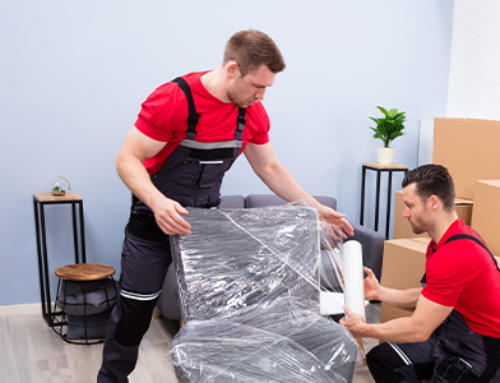There are plenty of reasons to move to Hawaii—the balmy weather, the breathtaking scenery, the laid-back island lifestyle, the spirit of aloha. But when it comes time to decide which Hawaiian Island to settle on, you might need a little more information to help you pick the right one.
In this article, we’ll give you 13 reasons to move to Maui, the Valley Isle. Our Maui-based team will give you an inside look at what makes Maui a top choice for relocation, in contrast to your other main options: Oahu, Kauai, or the Big Island.
And let’s be clear! There’s almost no wrong way to go when you’re moving to Hawaii—only the right fit for you, your goals, and your lifestyle.
Now, let’s take a look if Maui is the best match for you…
#1: It’s the Perfect Place to Live a Quiet, Peaceful Existence
You might not fully agree with this statement when you’re running errands in Kahului on a Sunday. But, compared to Oahu—Honolulu especially—Maui is a much quieter place to live overall:
- There’s no real “big city”—nothing close to the size of Honolulu. Kahului is as close as you’ll get, and it operates on a much smaller scale.
- There’s no real nightlife to speak of, with the exception of a few bars in Lahaina and Kihei that stay open late. Even late-night spot Zippy’s is only open until 10:00 pm! Most people on Maui are about that early-to-bed, early-to-rise lifestyle.
- There are no real mega-highways like the H1 or H2 on Oahu. (Although you can crank it up to 55 mph on a few of Maui’s bigger roads!)
In short, if you’re looking to slow down a bit—but not completely—Maui makes a good choice. Because you will find some pockets of activity on the Valley Isle…
#2: You’ve Got Choices When You’re Looking for Fun on Maui
To those used to the hustle-bustle of Oahu, Maui can feel a little sleepy. However, when you want to get out and grab a meal, hit happy hour, or do some shopping, you’ll have a number of different areas to choose from to keep things interesting, including:
- Kihei – A bustling tourist destination, full of restaurants, bars, and rental condos.
- Kahului – The main area of commerce on the island. Banks, grocery stores, and a full range of stores, plus a smattering of restaurants and bars.
- Wailea – Home to a cluster of Maui’s higher-end resorts, with high-end stores and restaurants to match.
- Lahaina – One of Maui’s most walkable towns. A former whaling port with plenty of bars, restaurants, and shops to explore.
- Paia – A sleepy beach town with several restaurants and a number of charming boutiques.
- Kaanapali – A resort hub in West Maui, with similar amenities to Wailea—a shopping mall, restaurants, and bars.
In fact, Maui still feels too busy and too developed for some. If that’s your opinion, Kauai or the Big Island might be a better fit.
At the end of the day, Maui may not be as fast-paced as Oahu. But there are a good amount of restaurants, bars, and shops to give you a pretty good variety of experiences. (Plus four movie theaters!)
#3: You’ll Find Some Good Food in Maui, Too
We’re not going to pretend that Maui’s restaurant scene is as broad or as extensive as Oahu’s. Oahu simply has more going on across the board—more chefs, more experimentation, more locations, and more patrons. Oahu’s restaurant scene is fueled by the more than one million people who live on the island, while Maui has only around 167,000 residents.
However, that doesn’t mean you can’t get a great meal on Maui. There are a number of stand-out restauranteurs who keep things interesting on the Valley Isle, including:
- Top Chef finalist Sheldon Simeon, whose mochiko chicken at his restaurant, Tin Roof, is always spot-on. He and his wife also have taken over Tiffany’s restaurant, a Maui institution, suggesting the Simeon family is committed to plying Maui residents with tasty eats for some time to come.
- Jeff Scheer, Maui Magazine’s 2015 Chef of the Year, who’s turning out mouth-watering meatballs and sourdough pizzas at his Upcountry restaurant, Marlow.
- Maui Magazine’s 2019 Chef of the Year, Kyle Kawakami, whose food truck, Maui Fresh Streatery, has been featured on Guy Fieri’s Diners, Drive-Ins & Dives—and whose long lines speak for themselves.
Maui also has a number of excellent restaurants, starting with the legendary (and pricey) Mama’s Fish House. Merriman’s Kapalua, the Restaurant at Hotel Wailea, Mateo’s, and Lahaina Grill are all also worth a visit. You’ll figure out your own favorites once you make the move.
Here on Maui, you may have to look a little harder for a meal that knocks your socks off. But they’re here, if you’re willing to spend a little—and experiment!
#4: The Island Is Big—But Not Too Big
Many first-time visitors to Maui underestimate just how large the island truly is. When they plan their drive from Lahaina in West Maui to Hana in East Maui, they’re often surprised that it can take two-and-a-half hours—at a minimum.
Maui’s size and varied topography means that you’ll get the opportunity to experience a number of diverse environments. You can sit on a white sand beach, stroll through a rainforest, pick your way across jet-black lava fields, and gaze down at the island from the top of a dormant volcano all in one day.
However, Maui isn’t so enormous that you’ll spend all your days driving. The island covers about 735 square miles in area, and it’s only about 26 miles wide. Compare that to the much larger area of the Big Island—4,028 square miles—and you’ll see why Maui feels a little more manageable.
To sum it up, Maui might just be the island Goldilocks would pick—not too big, not too small. It’s just right.
#5: You Can Sleep in a Volcano Crater
Like the rest of the Hawaiian Islands, Maui was formed by volcanic activity. In fact, two distinct volcanoes were responsible for creating the island of Maui: Haleakala on the eastern side and Mauna Kahalawai on the western side. Both volcanoes have long gone quiet, and the upper reaches of Haleakala are now protected as National Park land.
In Haleakala National Park, you can not only hike through the dormant crater of this shield volcano but you can also spend the night in it. You’ll have three rustic Wilderness Cabins to choose from—or you can make it a multi-day trek and stay in more than one. Camping is also an option, but you’ll have to hike in and hike out all of your equipment.
During the day, you can admire the crater’s eerie landscape, which veers between vibrant sand and rock, stretches of verdant green fields, and grassy terrain. At night, you’ll experience one of the quietest places on the planet. Hike out the other side, down Kaupo Gap, and you’ll be treated to fern valleys, forests—and incredible views of East Maui.
Through-hiking Haleakala Crater is a once-in-a-lifetime experience, and it’s just a drive away when you live on Maui. (BTW, if you want to reserve a Wilderness Cabin, plan ahead because they go fast!)
#6: Don’t Forget Maui’s Gorgeous Beaches
As you’ll soon discover when you live on Maui, beaches come in all types: rocky or sandy; white, black, or red; serene or wild and wind-tossed; resort-facing or remote.
On Maui, you can truly pick your own adventure when it comes to beaches. That said, the island is probably best known for its postcard-perfect white sand beaches, complete with turquoise water and swaying palm trees. Whereas some islands may have one or two of these, Maui has them a-plenty, all over the island.
A few for you to check out if you’re new to Maui:
- Makena Beach (also called Oneloa Beach or Big Beach) in South Maui
- Baldwin Beach on Maui’s North Shore
- Slaughterhouse Beach in West Maui
- Napili Bay in West Maui
- Kaanapali Beach in West Maui
#7: There’s Almost Always Wind
There’s a reason that windsurfers have flocked to Maui for decades. At Kanaha Beach and Hookipa, you’ll find some of the best year-round conditions for windsurfing in the world.
As windsurfing has waned in popularity, Maui’s waters have filled with sail-sport enthusiasts of all kinds. You’ll see plenty of kiteboarders on Maui’s North Shore. Wing foiling has really caught fire lately, and you’ll find a number of residents learning or mastering the sport from Kanaha’s shores.
If trying your hand at one of these sports is on your list—or you’re looking to perfect your craft—there’s no better place than Maui for consistently favorable wind conditions.
#8: And We’ve Got Plenty of Waves
If surfing is more your thing, Maui is also an excellent destination. We might not have Oahu’s North Shore, but we do have a few world-class waves—including Peahi/Jaws and the point break at Honolua Bay.
Even if you’re not quite at that level, you’ll still find a number of breaks on Maui—and they tend to be a little less crowded. With a little exploration and a little experimentation, you’ll find a spot where you can get your share of waves. Sure, we have our super-popular spots—Kihei Cover, for one—but they’re nowhere near as crowded as the mid-day lineup at Waikiki!
As for where to go surfing on Maui, that’s up to you to figure out once you arrive. The search is all a part of the journey!
#9: If It’s Hikes You Want, Maui Delivers
Maybe you’re more of a land-based adventurer. In that case, you’ll still encounter lots of options to keep you busy all over Maui.
Just to name a few:
- Walk around the Makawao Forest Reserve to enjoy its peaceful, tree-lined trails.
- Navigate your way up the steep Lahaina Pali trail for incredible views of coastal Maui.
- Experience Maui’s higher elevations in Poli Poli Spring State Recreation Area, where you’ll often find yourself immersed in a misty cloud bank.
- Hike up the Waihee Ridge Trail to catch verdant views of the lush West Maui Mountains.
And that’s just to get you started! If you’re someone who likes to put miles on your feet, Maui is a great place to explore.
#10: Celebrate the Arts at the MACC
It’s true that Oahu has a lock on arts and cultural opportunities—both in diversity and sheer number.
However, Maui is lucky enough to have the MACC—the Maui Arts & Cultural Center. The MACC hosts a wide variety of cultural activities year-round, including events like:
- Film festivals, including the YETI Film Festival and the Maui Film Festival
- Musical acts, including national acts like Steven Tyler, Paul Simon, Jack Johnson, Hall & Oates, Steve Earle, and Miranda Lambert, as well as Hawaii-based artists like Paula Fuga, Jake Shimabukuro, Henry Kapono, and John Cruz
- Dance performances, including traditional hula shows
- Comedy shows featuring acts like Anjelah Johnson-Reyes and Jo Koy
- Visual arts exhibits in the MACC gallery
If you want to see Hawaii’s biggest shows, you may still need to fly over to Oahu. But the MACC’s schedule will deliver a bunch of entertainment options—no plane ticket required.
#11: Whale Season!
From January–March, keep your eyes trained on the waters off Maui’s coasts for humpback whales. (Although whale season is technically November–May, January–March offers you the greatest whale-spotting opportunities!)
During the winter months, humpback whales make their way down to the Hawaiian Islands to mate, birth their young, and show them the skills they need to be successful whales in the wild. Although you can see whales all throughout the Hawaiian Islands, humpback whales seem to gravitate toward the shallower Auau Channel, which runs between Maui, Molokai, and Lanai.
There’s something pretty awesome about catching sight of a whale spout during your morning commute. Take some time to perch along the coastline, and you’ll see whales breaching, poking their flukes out of the water as they dive deep, and slapping their tails on the water (officially called lobtailing). If you’re lucky, you’ll even see them teaching their young some of these activities.
Although you can observe whales from land, you’ll get even better views on a whale-watching cruise out of Maalea or Lahaina. The boats keep a respectful distance, but they get close enough to give you a good look at these magnificent creatures.
#12: It’s Not a Shopping Paradise, But There’s Enough to Keep Most People Happy
If access to all kinds of shopping is your thing, Oahu is probably the island for you. The Ala Moana Center in Honolulu is the world’s largest open-air shopping center with more than 350 shops and restaurants.
However, Maui still has a fair number of options to keep you stocked. In addition to the usual big box stores—Walmart, Target, Costco, Lowe’s, and Home Depot—Maui also has a few lively malls. If Tiffany’s, Lululemon, and Prada are more your speed, check out the Shops at Wailea. Whalers Village in Lahaina features recognizable names like Alex and Ani, Lilly Pulitzer, a second Lululemon location, and a Sephora (among others)! Additionally, you’ll find locally-owned boutiques scattered all over the island so you can support our local business owners.
In summary, if in-person shopping is your thing, Maui isn’t quite paradise—but there’s still plenty to be found on the Valley Isle.
#13: The Island Chain’s Only SONIC & Chick-Fil-A
Finally, if you’re craving a SONIC Cheeseburger, a refreshing Slush, or one of their famous SONIC Blasts, there’s only one place to get them in Hawaii: right in Kahului, Maui. (At least, for now…)
Or, if an Original Chicken Sandwich is more your speed, Maui is also the only place in Hawaii you’ll find a Chick-fil-A location—also in Kahului.
Fast food might not be one of the perks you were thinking of when considering a move to Hawaii. But, if you find yourself in need of some familiar comfort food after the move, you can snag yours on Maui.
Feeling the Pull of Maui?
As you get to know each one of Hawaii’s islands, you’ll discover that each has its own personality—and perks. These 13 reasons to move to Maui may convince you that the Valley Isle is right for you—or they may reveal that another island might be a better fit.
If you want to learn more about Hawaii’s islands, check out our other article: What’s the Best Hawaiian Island to Live On, and Why?
Ready to move to Maui? Our Kahului-based team would be happy to help you make a safe, easy, and affordable move to Maui. Just reach out for a free quote to get started.



